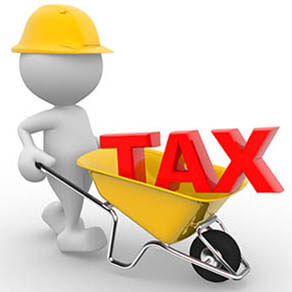
Tax Fundamentals for Construction Businesses in the New Year
For construction business owners, the arrival of a new year should mean two things: high hopes for a busy twelve months and essential tax planning. Let’s focus on the latter with some tried-and-true fundamentals.
Depreciation Deductions
Like any type of business, construction companies can generally deduct ordinary and necessary expenses. These may include tools, office supplies, utilities, insurance, wages, training, transportation and travel costs, as well as advertising and hiring fees.
Another deduction to look at is bonus depreciation. Businesses can deduct a sizable percentage of the cost of eligible assets in the year the asset is placed in service. This may include heavy equipment and other machinery.
Under the Tax Cuts and Jobs Act (TCJA), 100% bonus depreciation was provided for property placed in service from 2018 through 2022. However, under the TCJA, taxpayers can claim only 80% of the cost of assets placed in service in 2023, 60% for 2024, 40% for 2025 and 20% for 2026. Unless it’s extended, bonus depreciation will be unavailable for the 2027 tax year.
Thankfully, the first-year Section 179 depreciation deduction will allow many small and midsized construction companies to write off the entire cost of some or all of their 2023 and 2024 asset additions on their federal income tax returns (and possibly on their state income tax returns).
However, there are limitations. For tax years beginning in 2023, the maximum Sec. 179 deduction is $1.16 million and a phaseout rule kicks in if you put more than $2.89 million of qualifying assets into service in the year. For 2024, these amounts increase to $1.22 million and $3.05 million, respectively.
In addition, the Sec. 179 deduction can’t cause your business to have negative taxable income. If these limitations curtail your deduction, you may be able to claim bonus depreciation. Or you could be better off forgoing bonus depreciation and Sec. 179 write-offs and instead depreciating newly acquired assets over a number of years. Doing so may be beneficial if you expect to be in a higher tax bracket or you believe tax rates will increase. (We can help you make the right choice.)
Tax Credits
It’s also important to learn about every available tax credit and determine whether your construction company can qualify for them. Some examples include:
The Work Opportunity Tax Credit. It offers incentives for hiring job candidates from targeted groups — including qualified veterans, summer youth employees, ex-felons, individuals receiving certain government assistance and the long-term unemployed.
The Research Credit. Often referred to as the “research and development,” “R&D” or “research and experimentation” credit, this tax break may generally be taken on a dollar-for-dollar basis for an entire qualified project or the portion that meets IRS criteria. For construction businesses, eligible projects could involve the design and development of new types of buildings, subsystems or processes that improve efficiency or minimize uncertainty.
Other rules and requirements apply. We can help you determine whether you’re eligible for the research credit and, if so, how to maximize it.
Section 45L Credit. Eligible contractors who build or substantially reconstruct new energy-efficient homes may be able to claim tax credits from $500 to $5,000, depending on the standards met. They include Energy Star program requirements, Zero Energy Ready Home program requirements and prevailing wage requirements.
A Business Imperative
For construction companies, it’s a business imperative to ring in the new year with a solid, multifaceted tax strategy. Please contact our firm for assistance.
